Bottom Line
The Goal Zero Flip 24 is the only power bank we tested with a built-in USB plug. That makes it great for hikers who just need one full charge. Because of its smaller capacity, the Flip is exceptionally lightweight, portable, and quick to recharge. We often choose this power bank over other power banks we tested on our backpacking trips because it easily fits in any pocket and is not as cumbersome as most of the larger-capacity power banks. Though we wish it was more efficient on a power-per-ounce basis, it performs well in colder temperatures. As a note, the built-in USB plug can be difficult to use as the port is close to the main body of the bank and it dangles in the air when plugged in. Ultimately, Goal Zero is a sturdy battery pack ready to go anywhere, anytime.
Quick Specs
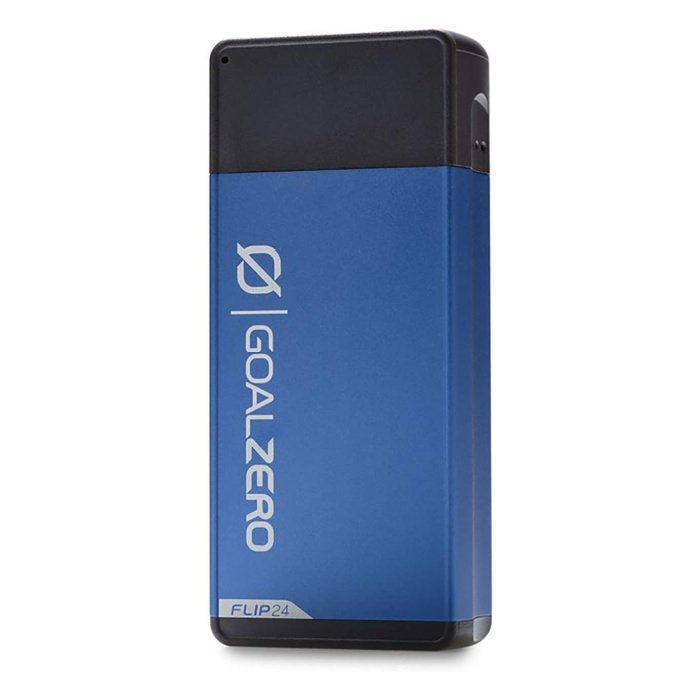
Goal Zero Flip 24
Best Single-Charge Power Bank
CleverHiker Rating:
71.8/100
Price:
$30
Weight:
4.8 oz.
mAh:
6,700
Time to full charge:
4 hrs
Pros
- Affordable
- Compact
- Ultralight
- Built-in USB-A plug
Cons
- Low amount of power in comparison to weight
- Small charging capacity (charges the avg. phone 1x)
- Power input can be hard to use
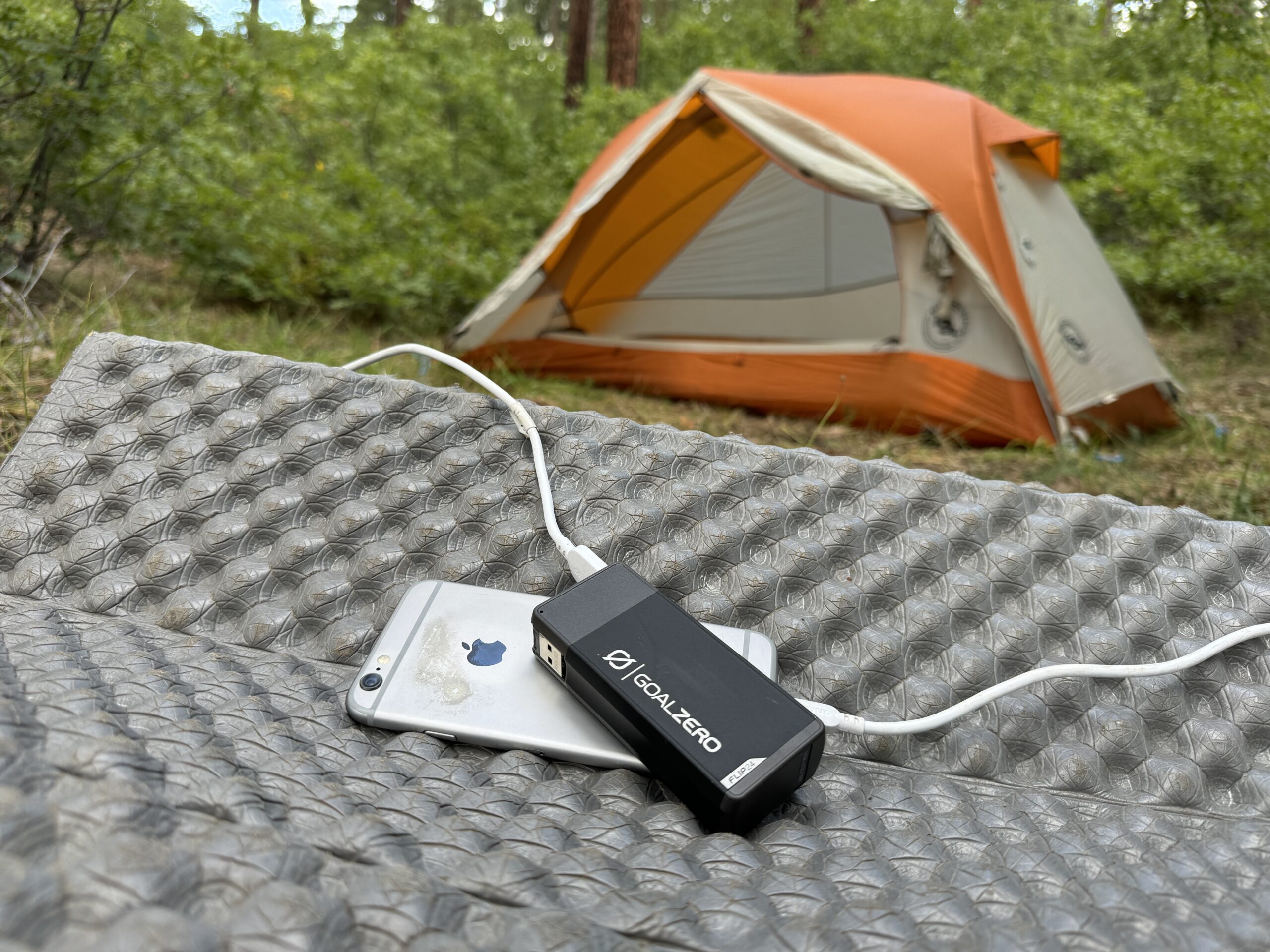
Efficiency
Efficiency is an area where the Goal Zero Flip does not rank well, which is disappointing given its small capacity size. During side-by-side testing, we plugged the Flip into a dummy load resistor and multimeter. This setup constantly drew power from the bank and recorded how much power was inside. We then compared the total power to the Flip’s weight to determine its efficiency. By making this calculation, we can better compare how power banks across various capacity sizes stand up to each other. Unfortunately for the Flip, it did not do well and had the lowest efficiency out of our lineup. That said, when we used it on local backpacking trips in southwestern Colorado, we found that it lasted about two nights before we ran out of battery. At this time, we could charge a phone up from a low battery- about 20%- up to around 80% two times before the Flip ran out of juice. That makes it an excellent choice for weekend backpacking trips that are only one to two nights long.
Weight & Portability
A considerable advantage of the Goal Zero Flip is how easy it is to bring along. It is small, weighs 4.6 ounces, and fits in various pockets of all sizes. We like this power bank for charging electronics during the day as it fits easily in a fanny pack or pants pocket next to the item that you’re charging. We generally try to charge electronics in the evening while hanging out at camp. However, we forgot to do so on one trip and we’re glad to have the Flip to catch up on charging while walking in the morning. During our metrics testing, we placed the Flip on our kitchen scale and measured its dimensions to calculate its total volume. Unsurprisingly, it emerged as our lineup’s lightest power bank.
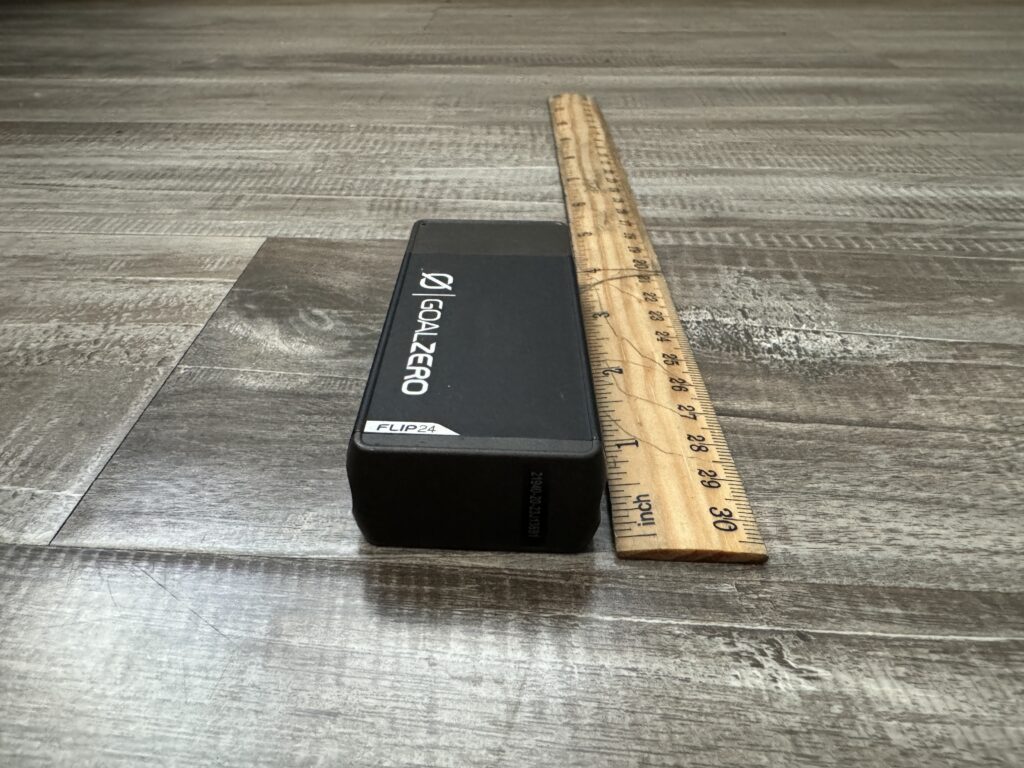
Durability
Thanks to its small size, the Goal Zero Flip can handle falls well, but the built-in USB plug is a likely failure point to watch out for. We dropped this power bank from eight feet above loosely packed dirt as part of our side-by-side testing, and it kept charging our electronics without any problems after numerous falls. We suspect its smaller size and weight allows it to hit the ground with less force. During the fall season, we used this power bank extensively due to its convenient size, and it never seemed to have any problems from cold, wet conditions or general use. Unlike many of the other power banks we have used, this model has no cosmetic damage after traveling with us for many adventures. The biggest durability concern, in our opinion, is the built-in USB plug. Compared to a port, the plug is more prone to damage due to getting bent which would result in needing to buy a whole new power bank.
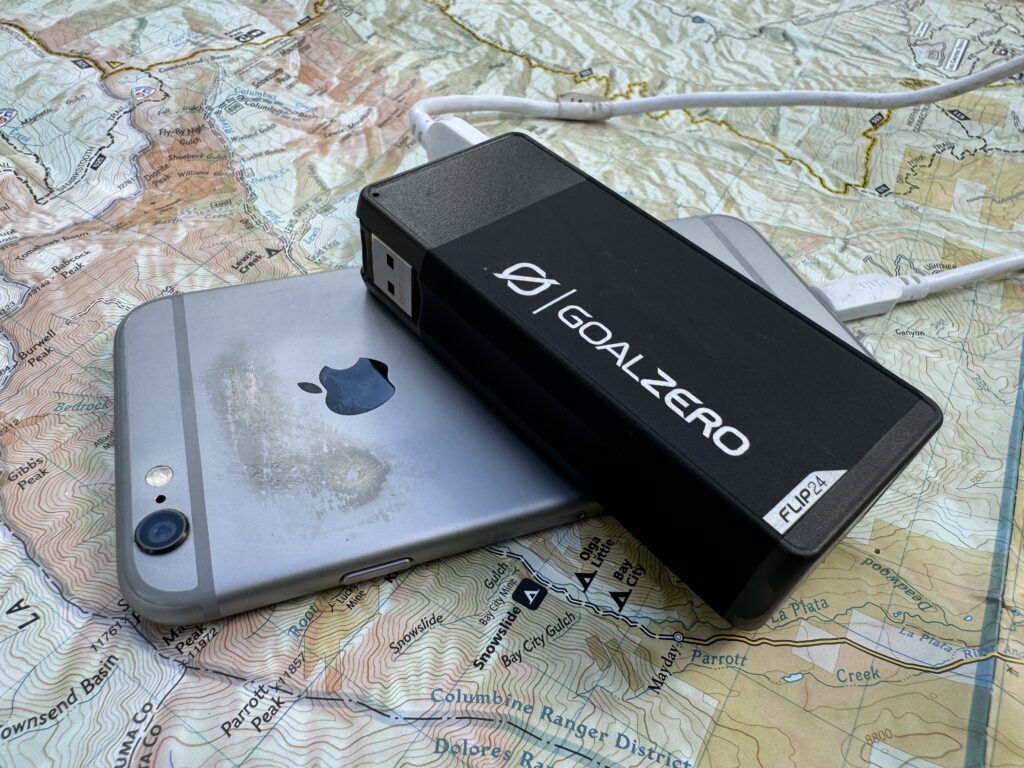
Charging Speed
Considering the Goal Zero Flip’s small capacity size, it has a disappointing recharge time. Logically, the smaller the battery, the more quickly it should recharge. However, when we timed how long it took to recharge this power bank from dead to full, it totalled three and a half hours. In comparison, two 10,000 mAh power banks recharged more quickly, and one recharged even an hour faster! One of the pros of a smaller battery pack is that it is more convenient all around, but in this case, the Goal Zero Flip didn’t live up to that expectation.
Features
The Flip is a relatively simple and streamlined power bank because it is tiny. There is just one USB-A output port and a built-in USB plug. For some, having the input plug may be a plus as it negates the need to carry an extra charging cord. However, it can also be a bit cumbersome and clumsy to use: if the wall outlet is turned on its side, then the Goal Zero will also subsequently be at a funny angle hanging off of the wall charger. On the bright side, the Flip does have pass-through charging, meaning that a phone can be charged off the power bank while the power bank is simultaneously charging from an outlet.
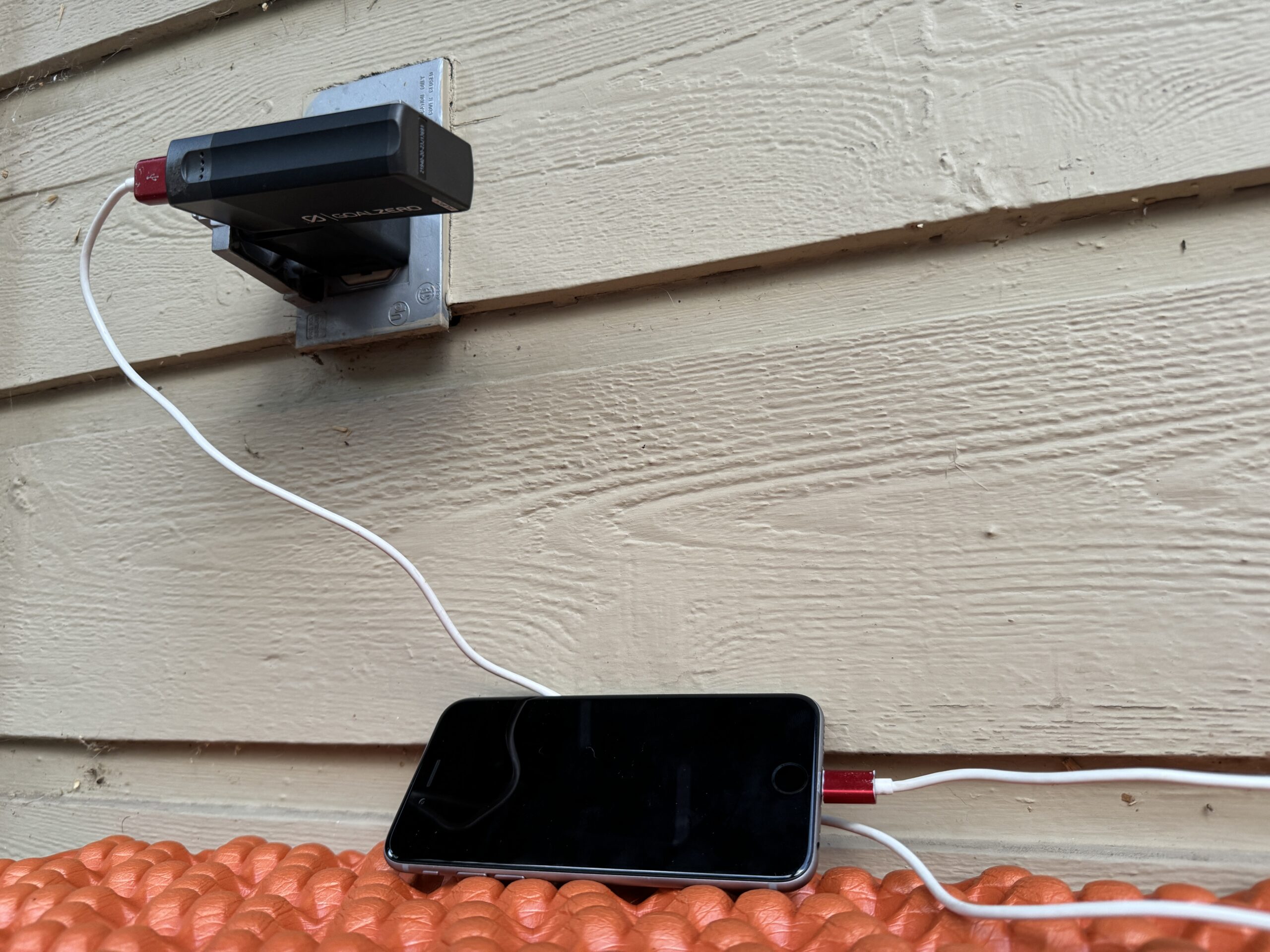
Cold Capability
The Goal Zero Flip performs surprisingly well in cold temperatures. During side-by-side testing, we used the same setup from our efficiency test by drawing power with a dummy resistor load and measuring the output with a multimeter. The only difference is that we placed the entire setup inside a refrigerator to see how the colder temperatures impacted its performance. The Flip performed significantly better in colder temperatures and had more power available for use. Out in the field, we didn’t notice any significant decline in performance due to freezing temperatures or wet conditions. While using the Flip on a brisk morning in the San Juan mountains, it worked as expected and charged the phone like normal.
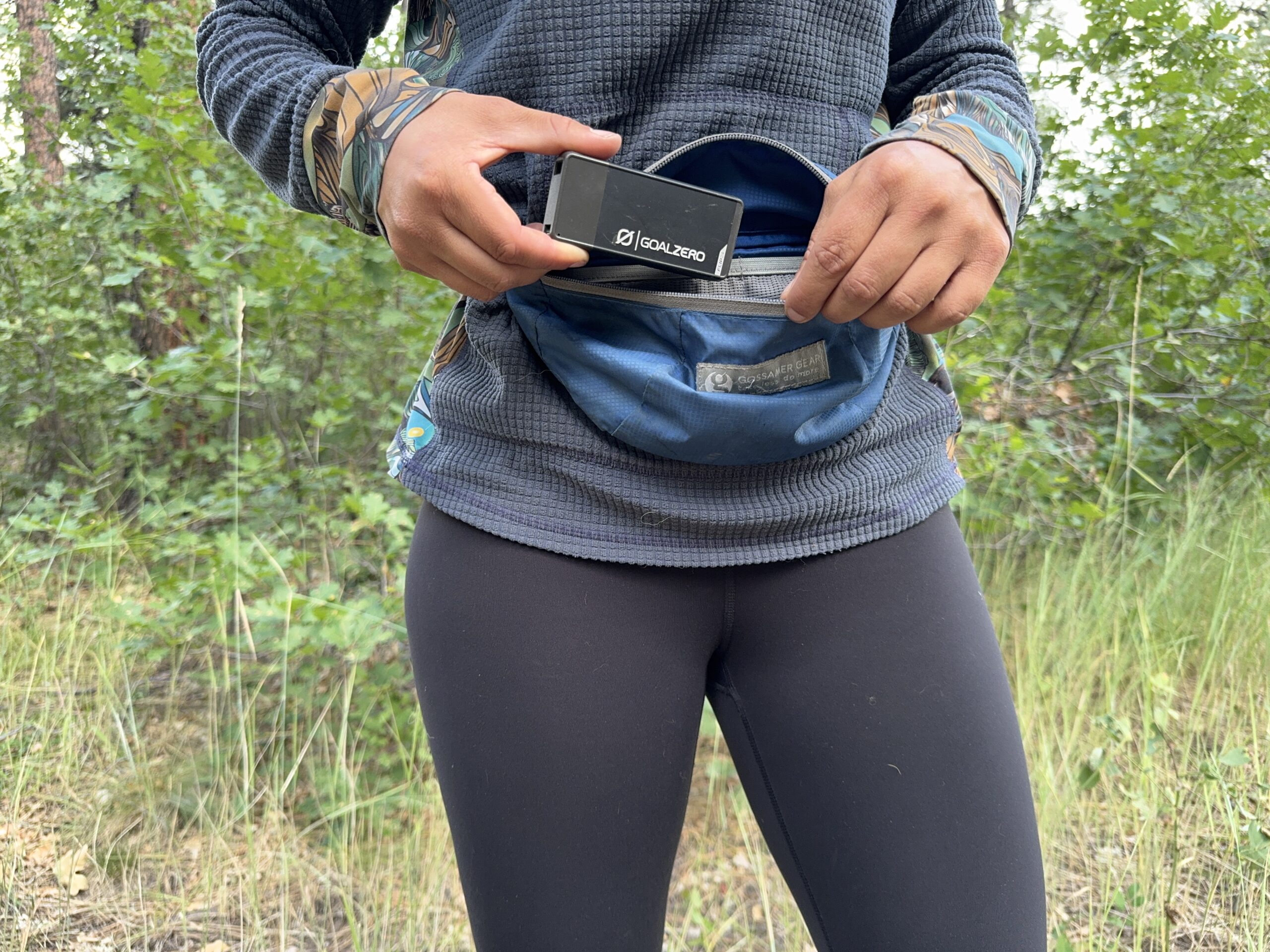
Should You Buy the Goal Zero Flip 24?
The Goal Zero Flip is an excellent option for charging on the go and short backpacking trips. Its compact design makes it a nifty piece of gear to throw in your backpack for a long day hike or for when you have that last-minute realization that your phone is about to die while running errands. It also makes a fantastic choice for weekend backpacking trips with low to moderate battery usage. Those who will be out for more than a night or two will likely find that the Flip does not have enough battery for longer trips.
What Other Power Banks Should You Consider?
Nitecore NB10000 Gen 3 Review: Another very portable and ultralight option is the Nitecore NB10000. We like this power bank because it is easy to fit inside pockets for use on the go, has excellent efficiency, and has a slightly larger capacity than the Flip. Like the Goal Zero Flip, the Nitecore has a relatively simple design and primarily caters to the ultralight audience.
Zendure Super Mini 10000 Review: Like the Goal Zero Flip and Nitecore NB10000, the Zendure Super Mini is tiny, portable, and lightweight. These three models are often our go-to battery packs because their small size make them easy to use and less cumbersome than larger-capacity options.
OKZU 10000 Review: Though it is slightly larger and heavier, the OKZU offers a fairly streamlined interface and a faster recharge time. We like this power bank because it is easy to use and relatively packable in the backcountry.
